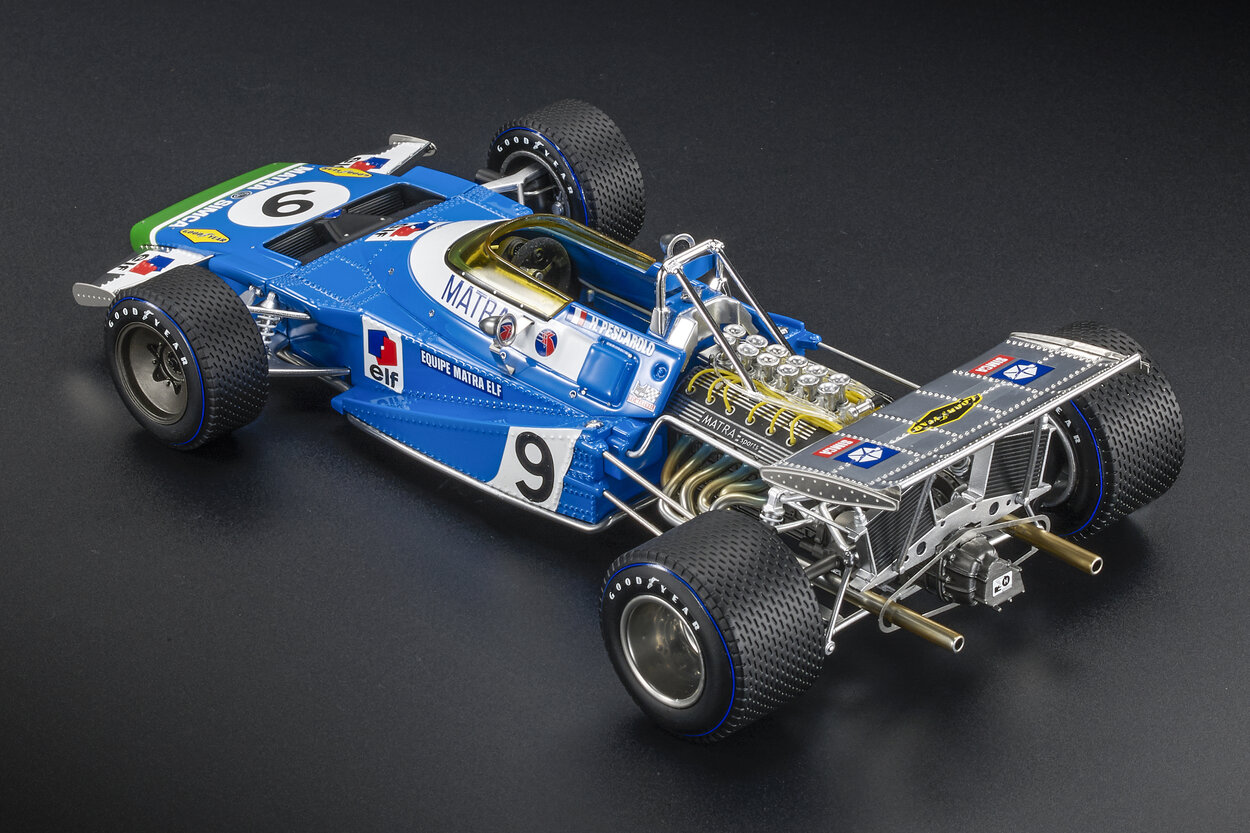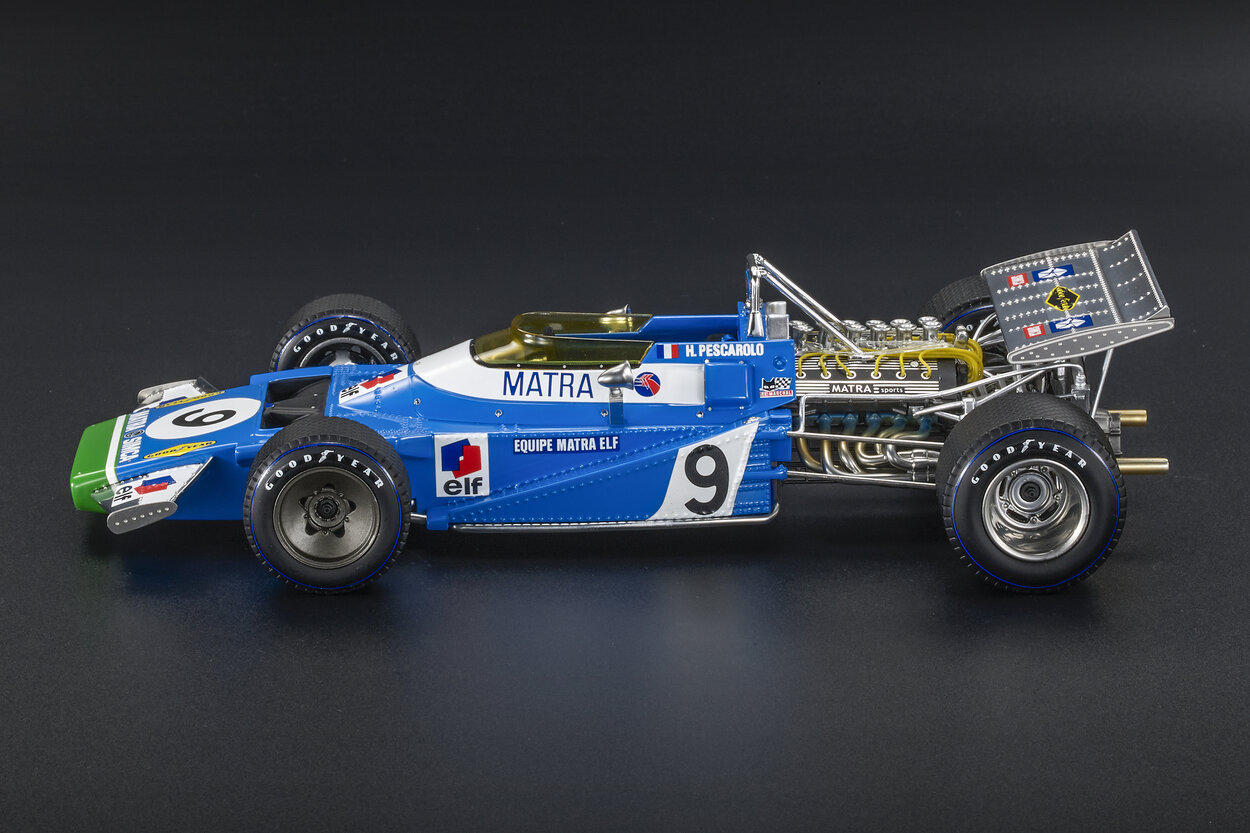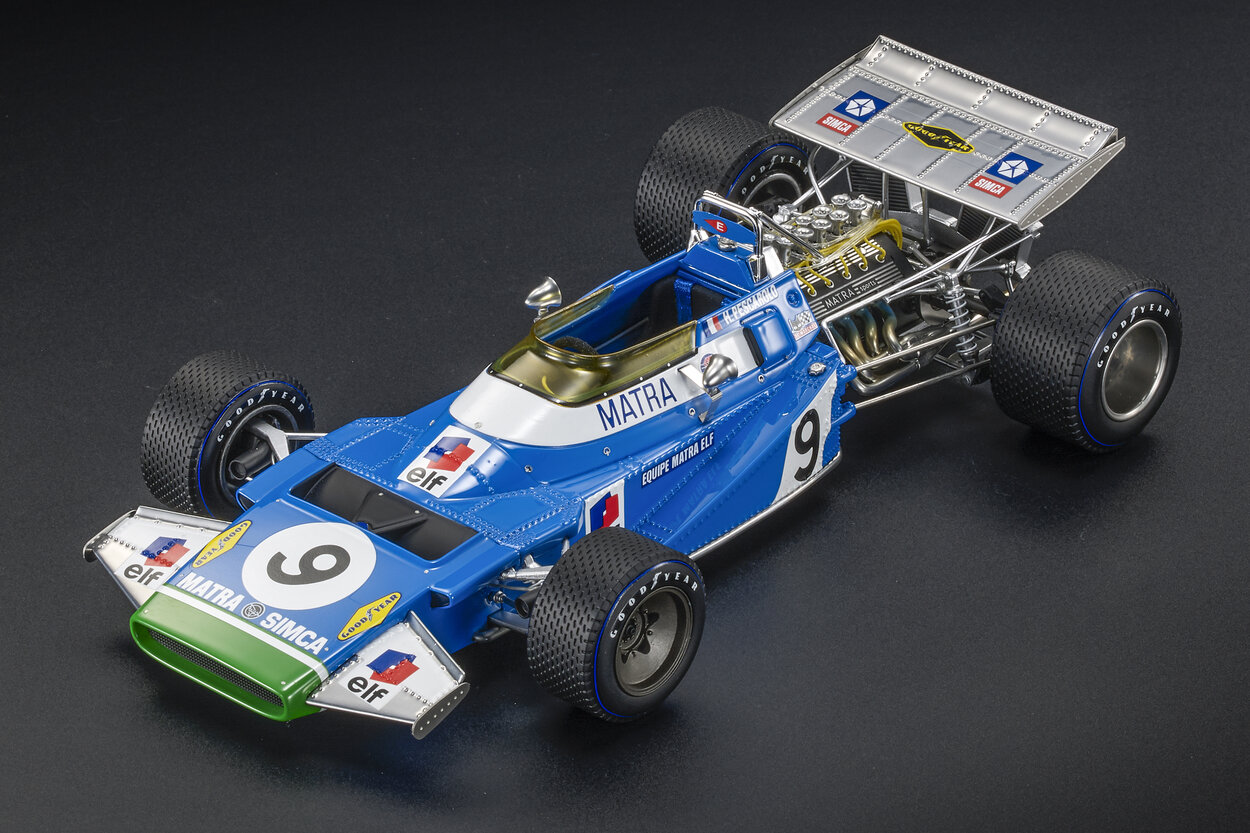Matra MS120
This was the car that marked the swansong of the French team’s adventure in Formula One. The MS120 was in fact the sixth and final machine that Matra built and entered in the World Championship. Including its three subsequent evolutions—the MS120B, C, and D—it would race until the end of the 1972 season, remaining competitive throughout, with a podium finish in Spain in 1971 and another in France the following year.
Having lost World Champion Jackie Stewart and Ken Tyrrell—who chose to stake their fortunes on the new and largely untested March 701—Matra lined up for the 1970 season with an all-French driver pairing: Jean-Pierre Beltoise, who had been racing for the team since 1966, and Henri Pescarolo, now in his second year with the outfit. In truth, Matra’s management had tried to persuade Tyrrell to fit his March with the more powerful Matra-built V12. But Tyrrell, whose operation was largely funded by Ford, ultimately chose to stick with the Ford-Cosworth option.

Drivers:
Jean-Pierre Beltoise: Victory escaped the Frenchman once again this year, but Beltoise still managed two podium finishes in 1970 with the MS120—both third places, at Spa and Monza. He also scored points on four other occasions: at Kyalami, Zandvoort, Zeltweg, and Mexico City. With a total of sixteen points, he finished ninth in the World Championship standings—his second-best career result.
Henry Pescarolo: At the wheel of the MS120, Pescarolo achieved the best result of his Formula One career with a third place in the 1970 Monaco Grand Prix. In fact, the 1970 season would prove to be the finest of his eight in the top tier of motor racing. Wearing his unmistakable, iconic apple-green helmet, the Frenchman also scored points in the Belgian, French, and German Grands Prix.
Our model cars:

Built around an aluminium monocoque chassis, the MS120 was powered by the Matra MS12, a naturally aspirated three-litre V12 producing 450 horsepower at 12,000 rpm. The gearbox was a five-speed Hewland unit. The front suspension featured double wishbones with coil springs, while the rear used trailing arms and coil springs. The car’s dry weight was 560 kilograms, with the side-mounted fuel tanks integrated into the bodywork.
Including its various evolutions, it competed in 35 races over three seasons, recording two pole positions and three fastest laps.

